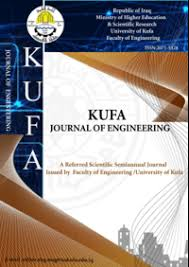Abstract
The hydraulic design of wastewater treatment plants (WWTP) is usually based on general guidelines and experience. Research and development in this field is mainly focused on understanding and improvement of the biological processes. However, hydraulic design is an important factor in the performance of a wastewater treatment plant. The aeration tank is a process-step where hydraulic and biological behavior are both important for overall performance. In this study a general Computational Fluid Dynamic (CFD) model is developed to characterize the flow field and improvement performance in conventional aeration tank in Al-Dewanyia Wastewater Treatment Plant in Al-Dewanyia city. A local Residence Time Distribution (RTD) model is developed to predict a resident time in the aeration tank based on converged flow fields. Furthermore, a Biological Oxygen Demand (BOD) model is incorporated to simulate BOD removal in the aeration tank. A number of operational scenarios are evaluated using CFD. These calculations provide useful information for the assessment of risks on short-circuit flows and sedimentation. The CFD results are compared with measurements and show good agreement. The gained insight in the hydraulic design improves the operation of the wastewater treatment plants and reduces energy and maintenance costs.
Keywords
aeration tank
BOD
Computational Fluid dynamic
measurements
Wastewater treatment
